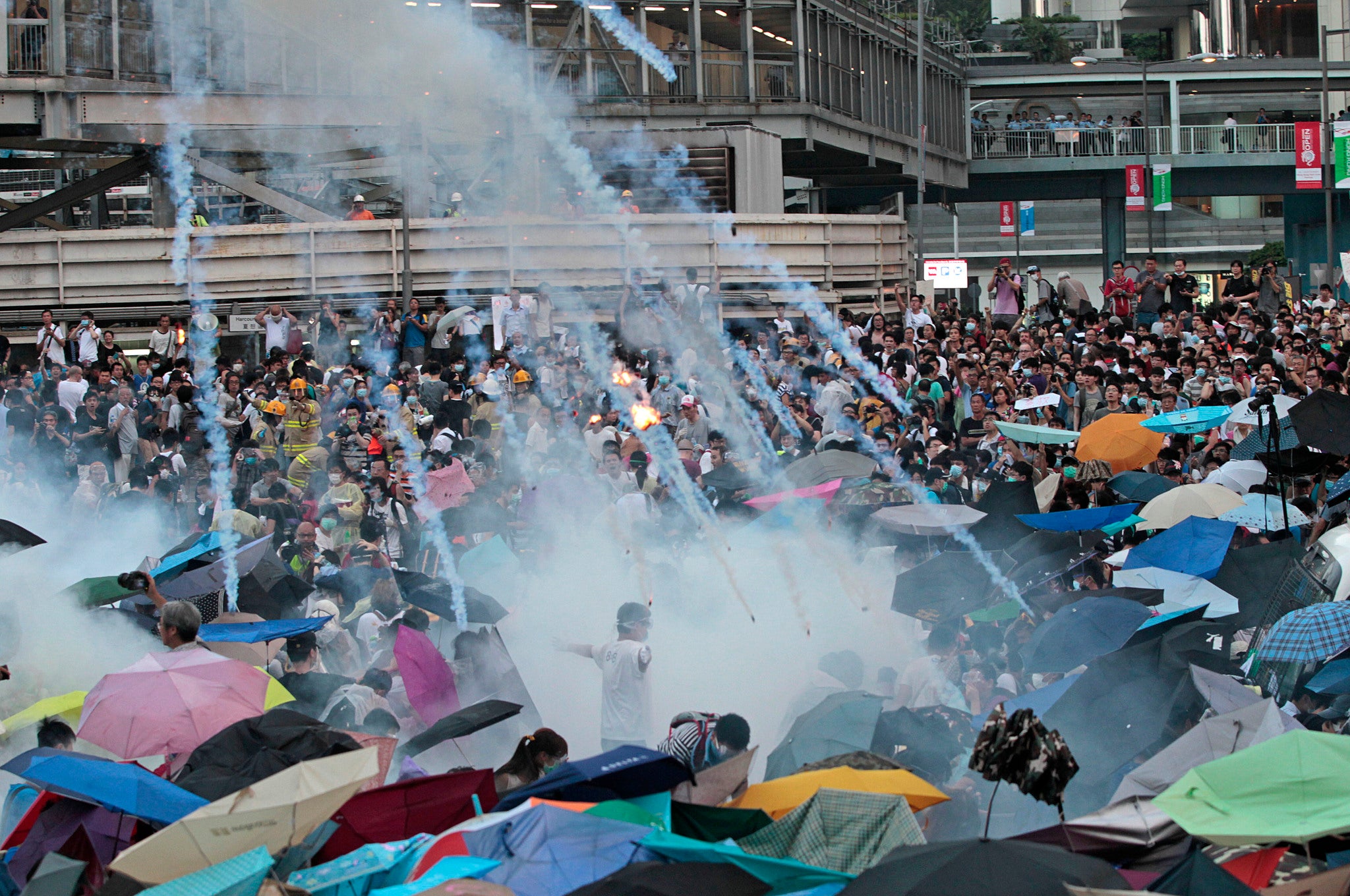Hong Kong protest: Why are pro-democracy supporters staging a sit-in? And what do they want?
Thousands of Hong Kong citizens would like the region's 2017 leadership election to include a range of candidates, not just those approved by China

Fierce clashes have erupted in Hong Kong between pro-democracy supporters and police, with tear gas deployed to try and disperse the crowds.
After a tense standoff all day, tear gas cannisters were lobbed into the masses by officers hoping to dispel them.
It sent protesters fleeing but only worked to clear them temporarily - the angry crowds chanted "cowards" at police as the scenes descended into chaos.
A mass non-violent sit-in had been staged by thousands of protesters today, angry at China’s decision not to allow the citizens of the former British colony free choice in who their next leader is.
The civil disobedience, known as the Occupy Central with Love and Peace movement, formally began in the early hours of Sunday morning aiming to paralyse an administrative area of Hong Kong and place pressure on the Beijing establishment. The protesters are camped outside the government headquarters and have now had their site sealed off by police.
The demonstration was actually due to start on Wednesday but was brought forward after informal and unrelated action began late on Friday started by students, with a sit-in aiming to reclaim Hong Kong’s Tamar site, which is also known as Civic Square.
A solidarity protest in London's Trafalgar Square began today at 3pm.
What had Beijing decreed that protesters are not happy about?
Elections for Hong Kong’s Chief Executive – its leader – is due to take place in 2017 and for the first time will use votes from the general public.
However last month, China’s National People's Congress Standing Committee (NPCSC) ruled out further voting reforms, meaning that only the candidates that Beijing approves of can run.
The four previous Chief Executives – following the end of British rule in 1997 – were elected by a committee of 1,200 people, many of whom had strong ties to China. This committee size has grown from 400 in 1996.
Though China declared that its bold move to allow the vote for the 2017 elections is something “we should all feel proud of”, it didn’t go far enough for the protesters, who criticised it as still muzzling those with differing political views.
Occupy Central said in a statement at the time: “Genuine universal suffrage includes both the rights to elect and to be elected.
“The decision of the NPC Standing Committee has deprived people with different political views of the right to run for election and be elected by imposing unreasonable restrictions, thereby perpetuating 'handpicked politics’.”
What is Occupy Central’s demands?
In an English-language statement on its website today the movement said it has two distinct demands:
- The immediate withdrawal of the NPCSC’s decision on the framework for Hong Kong’s political reform
- The swift resumption of the political reform consultation. The Leung Chun-ying administration has failed in the political reform process. We demand Leung re-submits a new political reform report to the central government which fully reflects the Hong Kong people’s aspirations for democracy. If Leung refuses to respond, the action will escalate.
Today’s statement added: “The two nights of occupation of Civic Square in Admiralty have completely embodied the awakening of Hong Kong people’s desire to decide their own lives.
“The courage of the students and members of the public in their spontaneous decision stay has touched many Hong Kong people. Yet, the government has remained unmoved. As the wheel of time has reached this point, we have decided to arise and act.”
Who initiated Occupy Central?
A law professor called Benny Tai Yiu-ting, who started the campaign in January 2013.
What is the police and governmental response to today’s formal sit-in?
Police have sealed off the site at Tamar, leaving hundreds of other people not able to reach that protest blocking other thoroughfares instead, the South China Morning Post says. It is thought that are tens of thousands of people in and around the protest zone.
Political protests are prohibited by Beijing and this trickles down to Hong Kong, which after British rule came back under Chinese power in a "one country, two systems" set-up.
Leaders of China's ruling Communist Party are worried that the dissent could spread to the mainland.
The current Chief Executive of Hong Kong, Leung Chun-ying, has implored people not to participate in “illegal” protests.
He also said today that the government will start a new round of consultations on electoral reform shortly, according to Reuters, though there was no mention of when this would be.
Some violent clashes happened in the two days until Sunday, with riot police targeting students with pepper spray and arresting at least 78.
Protesters are today equipped with umbrellas, goggles and masks ready for further confrontations with police after officers warned them to “leave now, for the sake of their personal safety”.
Join our commenting forum
Join thought-provoking conversations, follow other Independent readers and see their replies
Comments